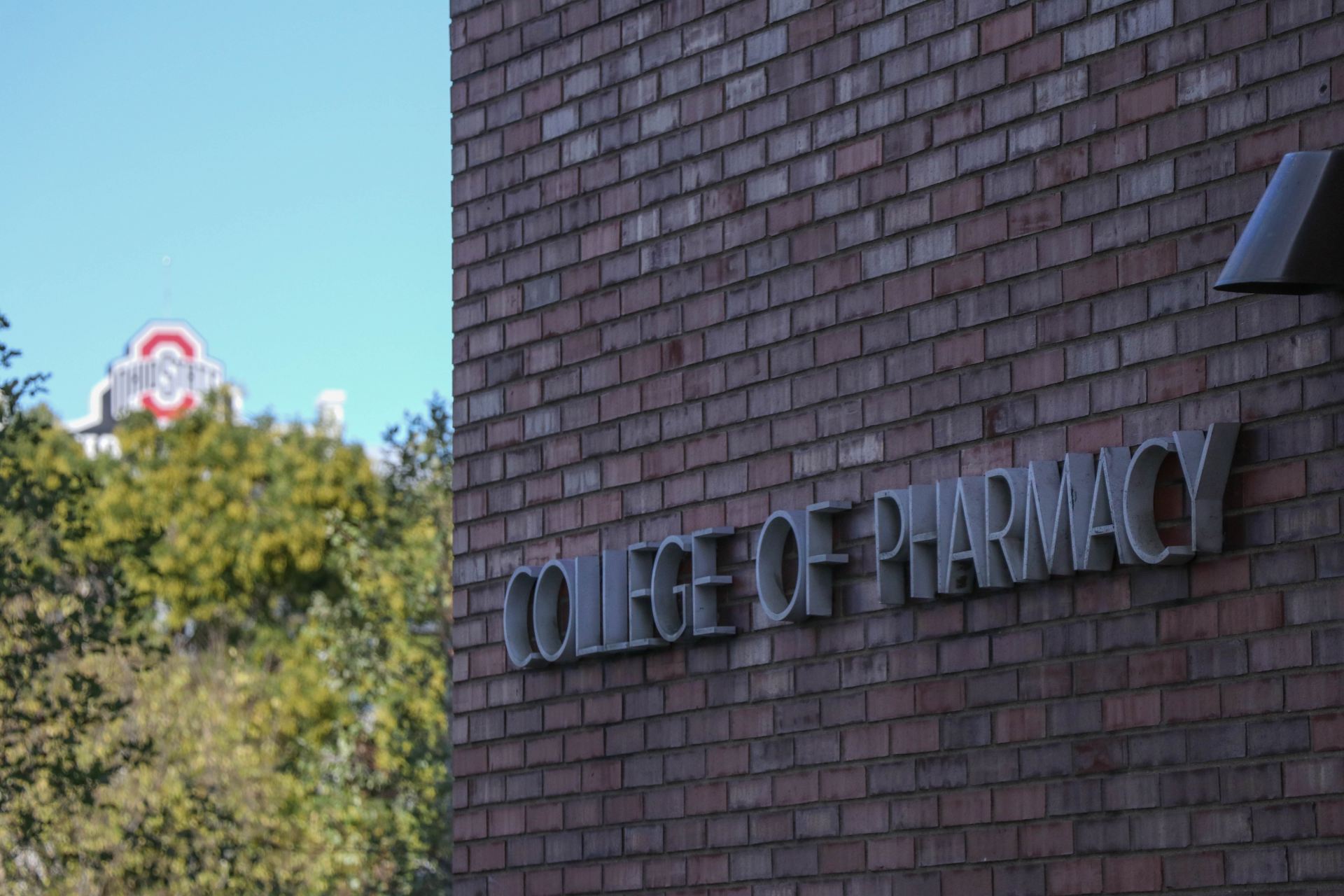
On Ohio State’s campus Cardinal Health partners with the College of Pharmacy to produce educational materials on how to safely consume prescription drugs. Credit: Jack Westerheide | Photo Editor
On Ohio State’s campus, Cardinal Health partners with the College of Pharmacy to produce educational materials on how to safely consume prescription drugs. Nationally, Cardinal Health funded efforts for a recently passed bill which essentially makes it close to impossible for the United States Drug Enforcement Administration to freeze suspicious drug shipments, according to a recent investigation by the Washington Post and “60 Minutes.”
Ohio State’s pharmacy college began Generation Rx, its program with Cardinal Health, in 2007 and the school formed a partnership with the central Ohio drug distributor and health-care company in 2009.
On its website, Generation Rx provides students with educational materials made by Ohio State and Cardinal Health, which is available for the public to use and learn about the danger of misusing prescription meds. Since its inception, Generation Rx has reached 6 million people, according to a college of pharmacy spokesperson.
Cardinal Health contributed a total of $1 million from 2014 to 2016 to fund lobbying efforts for the Ensuring Patient Access and Effective Drug Enforcement Act and other bills, which, according to the Post/“60 Minutes” report, “weaken aggressive DEA enforcement efforts against drug distribution companies that were supplying corrupt doctors and pharmacists who peddled narcotics to the black market.”
Cardinal Health’s history with the DEA is rocky. The company paid a $34 million fine for filing suspicious online drug orders after a DEA investigation in 2008; in 2011 it was investigated once again for sending millions of doses of oxycodone to a small number of Florida pharmacies, according to the Post/“60 Minutes” report.
The opioid epidemic has ravaged the country. Since 1999, opioid overdoses have quadrupled, according to the Centers for Disease Control and Prevention. Ohio has been hit particularly hard. In 2016, there were 3,495 unintentional opioid deaths. In 2008, the year Cardinal Health paid its $34 million fine, there were 733.
Cardinal Health released a statement upon the report’s publication, on its values and efforts to combat the opioid epidemic. It lists the Ohio State partnership and Generation Rx as a “prioritized activity” the company puts forth, because it’s “the right thing to do.”
“Prescription medications can help us live longer and healthier lives, but any medication has the potential to do harm – especially when misused,” the Generation Rx website states. The website goes on to explain the “perfect storm” that led to the opioid epidemic, which has three causes, one of them being easy access to medication.
The website lists normalization of medication and misperceptions and legality as the other causes of the epidemic.
“Generation Rx strives to enhance medication safety by educating people of all ages about the potential dangers of misusing prescription medications,” Ben Johnson, an Ohio State spokesman, said in an email. “Ohio State is grateful for all the Central Ohio businesses that support research and educational initiatives at the university.”
In the medical exchange of prescription opioids, there are three main parties: doctors who write prescriptions, pharmacists who fill the prescriptions and distributors who provide the drugs. Drug distributors have received backlash for not properly alerting regulators to “suspicious” orders.
For instance, Cardinal supplied 309,000 opioid pills to the town of Van, West Virginia, over a period of two years, according to the Charleston Gazette-Mail. Van has a population of about 200 people.
“It’s two things: either [the drug companies] knew what was going on and didn’t care or they were too lazy and negligent and could care less,” said attorney Robert Peirce.
His law firm Robert Peirce & Associates P.C. Peirce is currently suing 23 drug companies and individuals — one of which is Cardinal Health — on behalf of Beaver County, Pennsylvania, for repayment of damages the county asserts the opioid crisis has caused.
“They just fill every order that came and didn’t bother to see where it was going,” Peirce said.
Ohio State’s partnership with Cardinal isn’t entirely surprising given that it is one of central Ohio’s largest businesses and employers.
In addition to Generation Rx, Ohio State opened a Translational Research Center for Molecular Imaging Pharmaceuticals in 2014 as part of a “public-private partnership” between the university and Cardinal, according to an Ohio State news release. The 27,000-square-foot West Campus facility cost $13 million.
The center supports more than 80 employees ranging from Ohio State researchers to Cardinal Health radiopharmaceutical — drugs with radioactivity — manufacturing personnel.
The drug company also has a partnership with the Fisher College of Business. The Academy for Excellence in Health Care brings teams from various organizations together for a week to solve issues in their business, such as patient safety, according to a promotional video on the academy’s website.
Additionally, University President Michael Drake plays in a band with Cardinal chairman and CEO, George Barrett.
Cardinal Health declined to comment on its relationship with Ohio State and its role in the passing of the Ensuring Patient Access and Effective Drug Enforcement Act.
Jacob Myers contributed to this article


